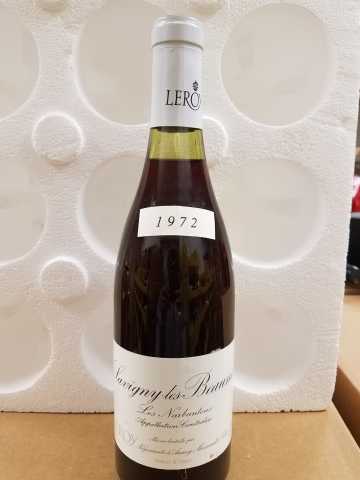I had to go digging deep in the books to find it, but I was pretty sure I had a 1972 Leroy tasting note, and I do! The 1972 Vosne-Romanee Les Beaux Monts tasted in 1997. I had only been tasting a couple of years at the time, plus back then most of us were not totally clued in to negociant vs domaine- so I do not know which this was. Per my notes I had recently bought it at Premier Cru for $69.50, so I think it was most likely a negociant bottling.
I won’t write out the entire TN, but basically (and remember this is 20 years ago) I noted it had an attractive medium body but lacked a solid midpalate, acidity was becoming prominent plus it had a certain “thickness”- in a foursquare way, not a compliment.
I have had little experience with Leroy’s Savigny wines. The Auxey Duresses wines can, and do, far outlive what one might expect for their hierarchal status, but I would not expect a Savigny to have significantly greater staying power than a Vosne of the same vintage assuming similar vineyard quality performances within the vintage.
On all the above, I would pass if it were me since I think is likely past its best.
More worrying is that vintage label. Between personal experiences and my appraisal work, I have had a first hand look at several hundred bottles of Leroy from the 50s to today- including original and late, and negociant and domaine releases. EDIT- to be fair, I have been in this game long enough to know there are often anomalous situations with labeling on burgundy. My past experience is not conclusive proof that the vintage label did not originate at Leroy.
I have never, ever seen a vintage tag that was not the usual oval with a fancy scripted vintage date. And I do not recall having seen situations where the glue used on those labels would fail (as is common with Petrus from the 60s and 70s to give a key example) and thus necessitate someone creating a replacement for reference purposes.
The relative fame and asking price of Leroy’s Narbantons of today is a fairly new thing. And so any older bottles deserve extra scrutiny and concern when anything seems amiss. It may seem strange that someone would choose 1972 as a vintage to fake a Leroy, but back in the 90s, 1972 was considered a very good vintage for her and the wines traded at very solid prices on late release.
